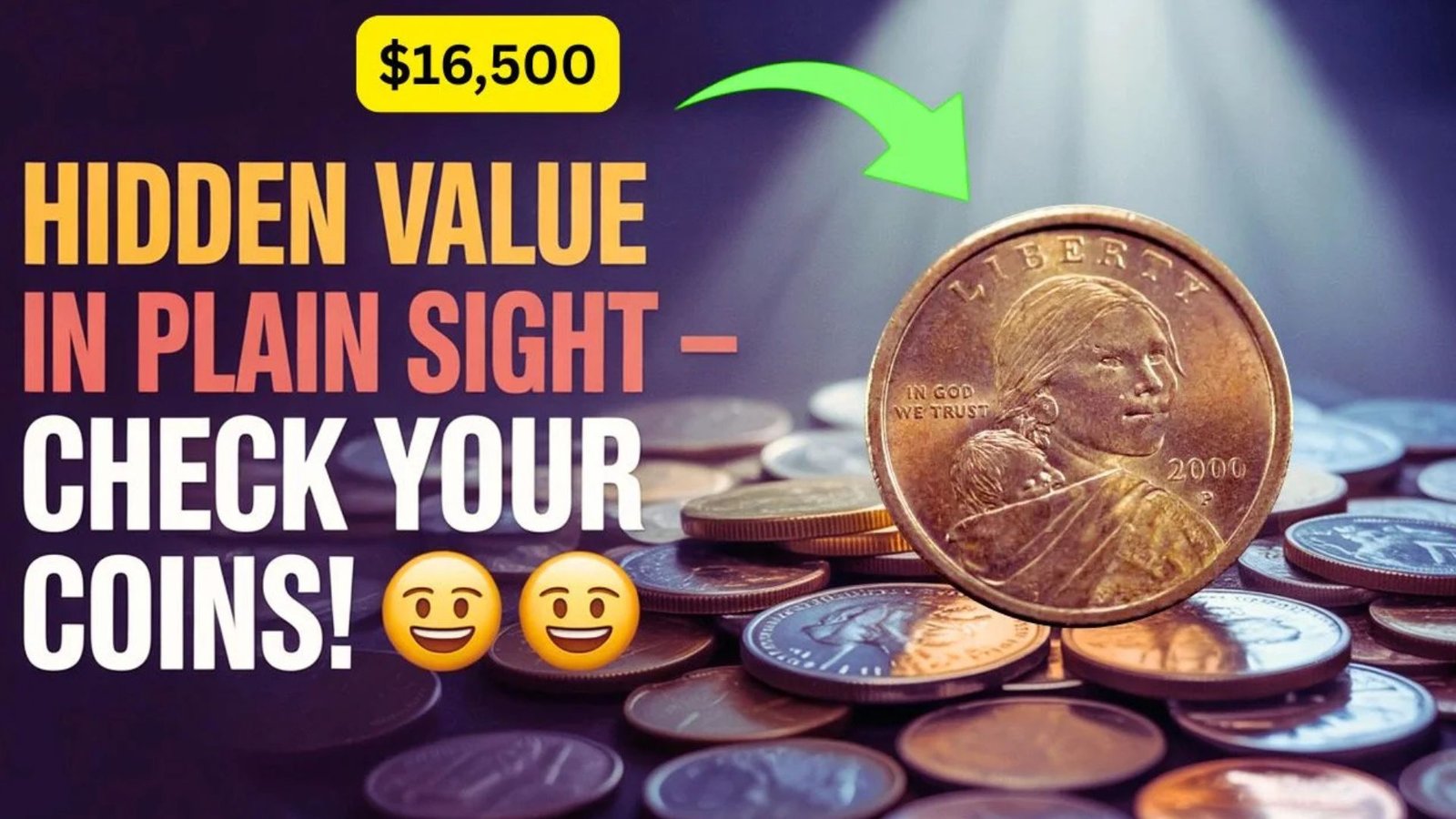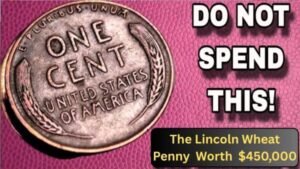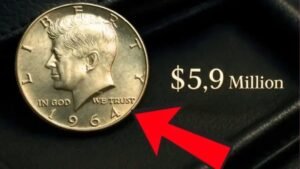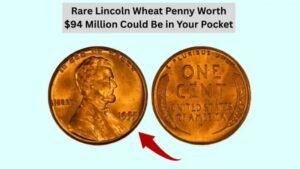Imagine using a vending machine and getting a coin worth thousands in your change! That’s exactly what happened with a rare 2000-P Sacagawea dollar, discovered in a vending machine and sold for an incredible $16,500 at auction in 2025. This golden-colored coin, featuring the Shoshone guide Sacagawea, is a collector’s dream due to its unique reverse design.
Known for its historical significance and rarity, this find has sparked excitement among coin enthusiasts across the USA. In this guide, we’ll explore why this Sacagawea dollar is so valuable, how to spot one, and why it’s worth checking your change. Let’s dive into this amazing discovery and learn how a simple coin can turn into a fortune!
What Makes the Sacagawea Dollar Special?
The Sacagawea dollar, first minted in 2000 by the U.S. Mint, honors Sacagawea, the Native American woman who guided the Lewis and Clark expedition. Its golden hue, made from a manganese-brass alloy, sets it apart from silver-colored coins. While most Sacagawea dollars are worth just $1, certain rare versions with unique features can fetch thousands. The coin found in the vending machine was a 2000-P “Cheerios” dollar, one of about 5,500 distributed in Cheerios cereal boxes as part of a 2000 promotional campaign. These coins have a special reverse with enhanced eagle tail feather details, making them highly sought after by collectors.
A Hidden Treasure in Everyday Change
The 2000-P Cheerios Sacagawea dollar was discovered by a lucky individual who received it as change from a vending machine. At first glance, it looked like a regular dollar coin, but a closer look revealed its rare reverse design. After being authenticated by a professional grading service, the coin earned a high grade (MS67) for its near-mint condition, driving its auction value to $16,500. Stories like this show that valuable coins can still be hiding in everyday places like vending machines, coin jars, or cash registers.
Why Is the Cheerios Sacagawea Dollar So Valuable?
The Cheerios Sacagawea dollar is rare because of its limited production and unique design. Here’s what makes it special:
Unique Reverse Design
- Enhanced Tail Feathers: The eagle on the reverse has sharper, more detailed tail feathers compared to standard 2000 Sacagawea dollars. This prototype design was used only for the Cheerios promotion.
- Limited Mintage: Only about 5,500 coins were included in Cheerios boxes, and many were spent or lost, reducing the number available today.
- High Condition Value: Coins in pristine condition, like the MS67-graded vending machine find, are worth more due to their rarity and quality.
Historical Significance
The Sacagawea dollar celebrates Native American history, featuring Sacagawea carrying her son, Jean Baptiste, on the front, designed by Glenna Goodacre. The reverse, with an eagle and 17 stars representing the states during the 1804 Lewis and Clark expedition, adds to its cultural value. Collectors prize these coins for their connection to American history.
How to Spot a Rare Sacagawea Dollar
Finding a valuable Sacagawea dollar requires a keen eye. Here’s how to check your coins:
Steps to Identify
- Check the Date and Mint Mark: Look for “2000-P” on the front, indicating it was minted in Philadelphia.
- Examine the Reverse: Use a magnifying glass to inspect the eagle’s tail feathers for enhanced detail, a sign of the Cheerios reverse.
- Look for Errors: Some rare coins, like the “Wounded Eagle” variant, have marks resembling a spear across the eagle’s body.
- Weigh the Coin: A standard Sacagawea dollar weighs 8.1 grams. Coins struck on the wrong metal (like a Susan B. Anthony planchet) may weigh differently.
- Get It Authenticated: Take suspected rare coins to a professional grading service like PCGS or NGC for verification.
Where to Find Them
Rare Sacagawea dollars can turn up in vending machines, coin rolls from banks, or old change jars. Since many were spent unknowingly, they’re still in circulation, waiting to be discovered.
Table: Difficult Words Explained in Simple Terms
| Term | Simple Explanation |
|---|---|
| Numismatist | A person who studies or collects coins. |
| Cheerios Reverse | A special eagle design with detailed tail feathers on some 2000 Sacagawea dollars. |
| Prototype Design | An early test version of a coin’s design, not used for mass production. |
| Mule Error | A coin with mismatched front and back designs, like a Sacagawea dollar with a quarter’s reverse. |
| Manganese-Brass Alloy | A metal mix giving the coin its golden color, made of copper, zinc, manganese, and nickel. |
| Mint Condition | A coin in perfect or near-perfect condition, with no wear or damage. |
FAQs About the Rare Sacagawea Dollar
What is the value of a 2000-P Cheerios Sacagawea dollar?
In pristine condition (MS67 or higher), it can sell for $10,000–$16,500 or more at auction. Regular 2000 Sacagawea dollars are worth $1.
How do I know if my Sacagawea dollar is rare?
Check for a 2000-P date and enhanced eagle tail feathers on the reverse. Use a magnifying glass and compare with standard coins. Get it graded by PCGS or NGC.
Where can I find rare Sacagawea dollars?
Look in vending machine change, bank coin rolls, or old coin jars. Many Cheerios coins were spent and may still be in circulation.
What is the Wounded Eagle Sacagawea dollar?
It’s a rare 2000-P coin with a die error that looks like a spear across the eagle’s body. Only about 100 exist, valued up to $5,160.
Can cleaning my coin increase its value?
No, cleaning damages coins and lowers their value. Keep them in their original condition.
How do I sell a rare Sacagawea dollar?
Take it to a reputable coin dealer or auction house after professional grading by PCGS or NGC to confirm its value.
Conclusion
The 2025 discovery of a rare 2000-P Cheerios Sacagawea dollar in a vending machine, sold for $16,500, proves that treasures can hide in everyday change. With only about 5,500 of these coins released in Cheerios boxes, their enhanced reverse design and pristine condition make them a collector’s gem. The Sacagawea dollar’s golden hue and historical tribute to a Native American hero add to its appeal. Next time you get a dollar coin from a vending machine or coin jar, check the reverse for those sharp eagle feathers—you might be holding a fortune worth thousands! Visit a local coin dealer or start inspecting your change to uncover your own piece of history.




